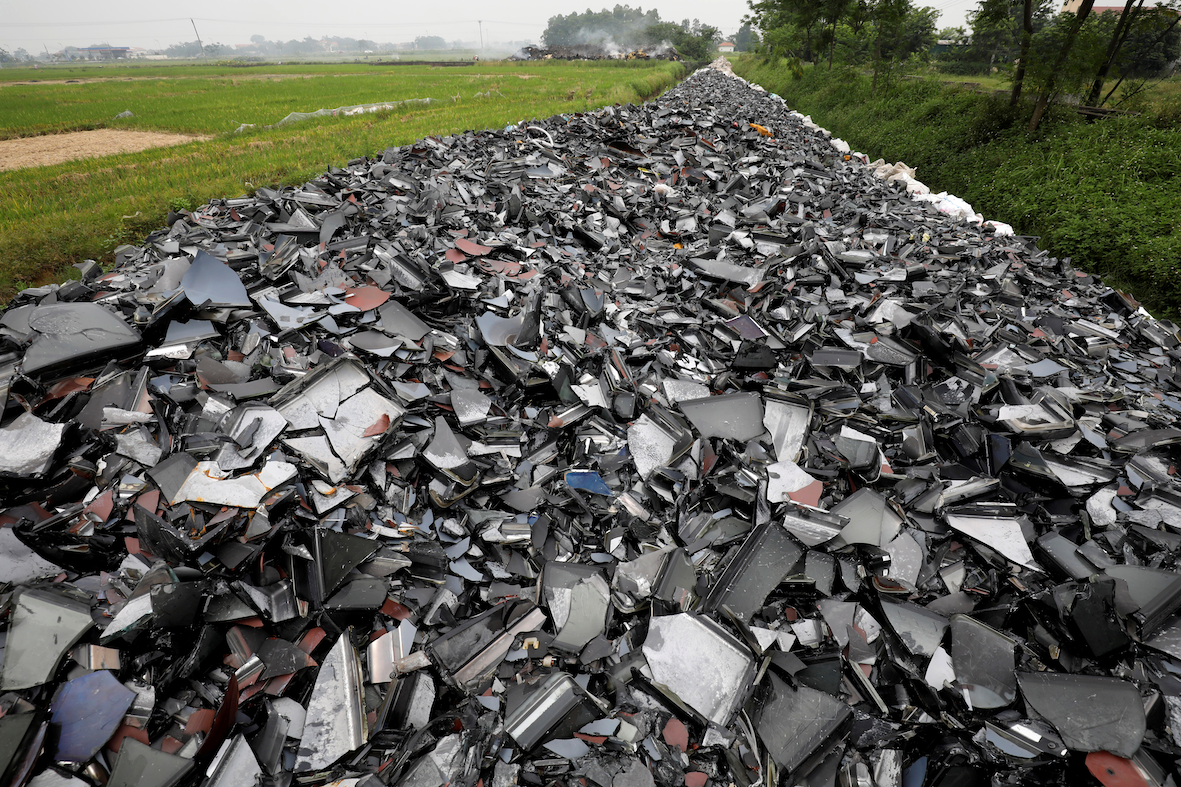In its federal budget on March 28, alongside a new five-year tax credit worth $4.5 billion for Canadian clean tech manufacturers, Canada introduced a plan to implement a “right to repair” for electronic devices and home appliances in 2024. The federal government will begin consultations this summer in this regard.
This movement toward a Canadian right to repair is a welcome step with tangible economic, social and environmental benefits. For this is a fundamental element of ownership. It establishes that consumers have the right to repair goods themselves or to have them repaired by either original equipment manufacturers (OEMs) or at independent repair shops. A key element of the right is that repair manuals, tools, replacement parts and services must be available at competitive prices.
Right-to-repair movements have sprung up in the United States, Europe, South Africa, Australia and Canada, encompassing a range of products. Most familiar might be efforts to allow consumers to choose independent shops to repair their phones and computers. But the right to repair also involves battles over who should be able to fix Internet of Thing devices, as well as other products that function via embedded software systems, such as vehicles, agricultural equipment and medical equipment.
For too long the right to repair has been a casualty of the digital economy. Many manufacturers have long discouraged or outright prohibited self-repair or independent repair, in part by threatening penalties for copyright infringement or by voiding warranties for products repaired by independent shops or using non-OEM parts. As I argue elsewhere, corporate power to deny repair is possible because companies that control the digital hearts of software-enabled products — which today includes everything from laptops to refrigerators, vacuum cleaners, tractors and fitness wearables — can use copyright law to restrict their customers or third-party services from fixing these products.
Identifying problems with software-enabled goods often necessitates the use of diagnostic software, while undertaking repairs often requires copying all or part of the product software. However, manufacturers’ licensing agreements typically prohibit any actions, including repair, that copy or alter the product’s software. The manufacturers contend that such actions constitute copyright infringement. Companies typically cite this provision to prohibit any repairs by unauthorized persons, which they term anyone not authorized by the OEMs to copy or modify the product’s copyrighted software systems in the course of diagnosing or fixing the problem. Companies may not actually sue customers for copyright infringement, but they may target independent repair shops. Such tactics may discourage self-repair or the use of independent service people.
Questions of who can repair products and under what circumstances may seem esoteric. But these questions are fundamental to the nature of ownership and control. In fact, control over intangible forms of knowledge such as intellectual property and software-enabled goods is central to exerting power in the knowledge economy. I make this argument in a forthcoming book, co-authored with Brock University’s Blayne Haggart, The New Knowledge: Information, Data and the Remaking of Global Power.
The right-to-repair movement can be understood as a consumer pushback against the commodification of knowledge and a battle over who should be allowed to control and use knowledge — to repair, tinker or innovate — and in whose interests.
It’s important to effectively counter industry opposition, which has been successful in defeating right-to-repair legislation or limiting action to incremental changes.
Battles over the right to repair have particular relevance for Canada. Major manufacturers, often headquartered in the United States or Europe, set rules regarding repair that privilege their business models, favouring their branded suppliers and authorized repair technicians to maximize control over repair services. These actions not only shut out Canadian third-party businesses that supply replacement parts and repair services, but also disadvantage Canadian consumers.
Given these challenges, how should we prepare for consultations this summer? I offer several suggestions:
First, policy makers should build upon right-to-repair efforts being made elsewhere, particularly those in Australia, the European Union and the United States. Australia appears to be moving toward a right to repair, and its consumer watchdog agency, the Australian Competition and Consumer Commission, studied the effects of restrictive repair practices on the agricultural machinery and the after-sales market in that country in 2020.
The European Parliament adopted resolutions on the right to repair in 2020 and 2021, and the European Commission is planning a legislative proposal on the matter by mid-2023, building on several years of working to make manufacturing and product design more eco-friendly. In the United States, President Joe Biden bolstered the case for right to repair in July 2021 with an executive order supporting competition. Moreover, 34 states have introduced or are considering right-to-repair legislation.
Second, it’s important to effectively counter industry opposition, which has been successful in defeating right-to-repair legislation or limiting action to incremental changes. Such legislation continues to face stiff industry opposition at the state level in the United States. Big companies in the technology, vehicle and agricultural industries — for example, Apple, General Motors and John Deere — have long lobbied against the right to repair. Industry actors tend to argue that repairing or tinkering with their software-enabled products raises potentially serious security and safety complications. Although such concerns may be valid in some cases (particularly when dealing with safety-critical goods such as medical devices), these are exceptions. In many cases, however, independent repair by appropriately trained technicians can be a safe, viable alternative to manufacturers’ “authorized” repairs.
Third, policy makers should ensure broad engagement with and representation from the people who are most affected by restrictive repair policies. Beyond ordinary consumers, these include small farmers, independent repairers, small retailers of refurbished goods, people who patronize second-hand or reseller stores, and those in the aftermarket industry selling third-party parts. Input is also needed from people living outside major population centres who must travel to authorized repair shops or otherwise incur costs in time and money in receiving service.
Fourth, it’s time to recognize that the right to repair has benefits beyond consumer rights. Repair bolsters secondary markets, including second-hand stores and resellers, that provide their customers with viable used goods, which are important money-savers for economically marginalized communities. Repair also helps to decrease the environmental burden of modern consumerism. This problem is particularly acute in the manufacture of many electronic technologies that require the extraction of rare earth minerals. All too often, once these products no longer function, they are dumped as e-waste, often in developing countries.
Finally, policy makers should consider a broad interpretation of the right to repair. This approach could include requiring manufacturers to make available at competitive prices the necessary items for repair, including diagnostic software and replacement parts. It could restrict manufacturers’ practice of planned obsolescence, that is, letting functional goods be rendered inoperative by withholding essential software updates.
The federal government is offering Canadians a chance to create a right to repair. We should seize the opportunity.
This article first appeared in The Conversation.



